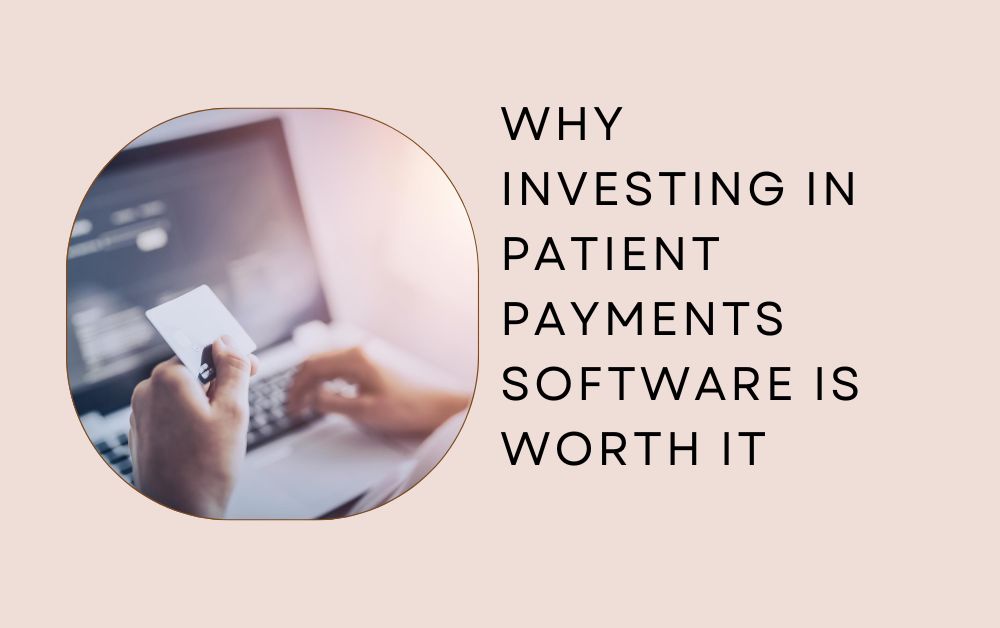In the ever-evolving world of healthcare, managing patient payments efficiently is crucial. Investing in patient payments software can significantly improve the financial operations of medical practices. This blog explores why this investment is not only beneficial but essential for modern healthcare providers.
Understanding Patient Payments Software
What is Patient Payments Software?
Patient payments software is a tool designed to streamline the process of collecting and managing payments from patients. It allows healthcare providers to process payments electronically, manage billing more efficiently, and improve overall financial operations. This software often integrates with existing practice management systems, offering a seamless experience for both patients and providers.
How Does It Work?
Typically, patient payments software works by allowing patients to pay their bills online or via mobile devices. It handles various payment methods, including credit cards, debit cards, and electronic checks. The software also helps in tracking outstanding balances, sending reminders, and generating detailed financial reports. By automating these processes, it reduces the administrative burden on staff and minimizes errors associated with manual billing.
Note – Ready to streamline your billing process and enhance patient satisfaction? Invest in BlueSecure’s Patient Payments Software today. Our cutting-edge solution simplifies payment collection, boosts efficiency, and provides detailed financial insights. Contact us now to see how BlueSecure can transform your practice and help you achieve financial success with ease.
Key Benefits of Investing in Patient Payments Software
Improved Efficiency and Time Savings
One of the most significant advantages of patient payments software is the improvement in efficiency. Traditional billing methods often involve manual data entry, paper forms, and time-consuming follow-ups. By automating these tasks, patient payments software speeds up the payment process and reduces the time staff spends on administrative duties. This efficiency not only helps in managing the financial aspects of the practice but also allows healthcare providers to focus more on patient care.
Enhanced Patient Experience
Patient experience is a crucial factor in the success of any healthcare practice. Patient payments software enhances the experience by providing a convenient and user-friendly way for patients to pay their bills. Patients can make payments online at their convenience, view their account history, and receive instant confirmation of transactions. This ease of use can lead to higher patient satisfaction and better overall relationships between patients and providers.
Increased Payment Collection Rates
Efficient payment collection is vital for maintaining a healthy cash flow. Patient payments software can significantly improve collection rates by offering multiple payment options and automated reminders. Patients are more likely to pay their bills on time when they have easy access to online payment methods and receive timely reminders about outstanding balances. This proactive approach helps reduce the number of overdue accounts and ensures a steady flow of revenue.
Better Financial Tracking and Reporting
Accurate financial tracking and reporting are essential for making informed business decisions. Patient payments software provides detailed reports on various financial metrics, including payment trends, outstanding balances, and revenue streams. These reports help practice managers analyze financial performance, identify areas for improvement, and make strategic decisions based on real-time data. With better financial insights, practices can optimize their operations and improve their overall financial health.
Choosing the Right Patient Payments Software
Features to Consider
When selecting patient payments software, it is important to consider several key features. Look for software that offers secure payment processing, user-friendly interfaces, and integration capabilities with your existing practice management system. Ensure that the software supports various payment methods and provides robust reporting tools. Additionally, consider the level of customer support provided and whether the software can scale with the growth of your practice.
Integration with Existing Systems
Integration with existing systems is a crucial factor in choosing the right patient payments software. Seamless integration ensures that the software works well with your current practice management and electronic health record systems. This compatibility minimizes disruptions and allows for smooth data transfer between systems. Effective integration also enhances the overall efficiency of billing and payment processes.
Cost Considerations
While investing in patient payments software is beneficial, it is important to consider the cost. Evaluate the pricing structure of different software options, including any setup fees, subscription costs, and transaction fees. Compare these costs with the potential benefits and savings to determine the best value for your practice. Some software providers offer flexible pricing plans or discounts for long-term commitments, so explore these options to find a cost-effective solution.
Implementing Patient Payments Software
Steps for Successful Implementation
Implementing patient payments software requires careful planning and execution. Start by conducting a thorough needs assessment to identify the specific requirements of your practice. Next, select a software solution that meets these needs and ensure it is compatible with your existing systems. Develop a detailed implementation plan, including timelines, training schedules, and communication strategies. Involve key stakeholders in the process to ensure a smooth transition and address any concerns or challenges that may arise.
Training and Support
Proper training and support are essential for the successful adoption of patient payments software. Provide comprehensive training for your staff to ensure they understand how to use the software effectively. Offer ongoing support to address any issues or questions that may arise during the implementation phase. Effective training and support help maximize the benefits of the software and ensure that your practice can fully leverage its capabilities.
Conclusion
Investing in patient payments software offers numerous advantages for healthcare providers. From improved efficiency and enhanced patient experience to better financial tracking and increased payment collection rates, the benefits are clear. By carefully selecting the right software and implementing it effectively, practices can streamline their financial operations and focus more on delivering high-quality patient care. If you’re looking to enhance your practice’s financial management and patient satisfaction, investing in patient payments software is a step worth taking.
For more insightful articles related to this topic, feel free to visit magazineted.com
